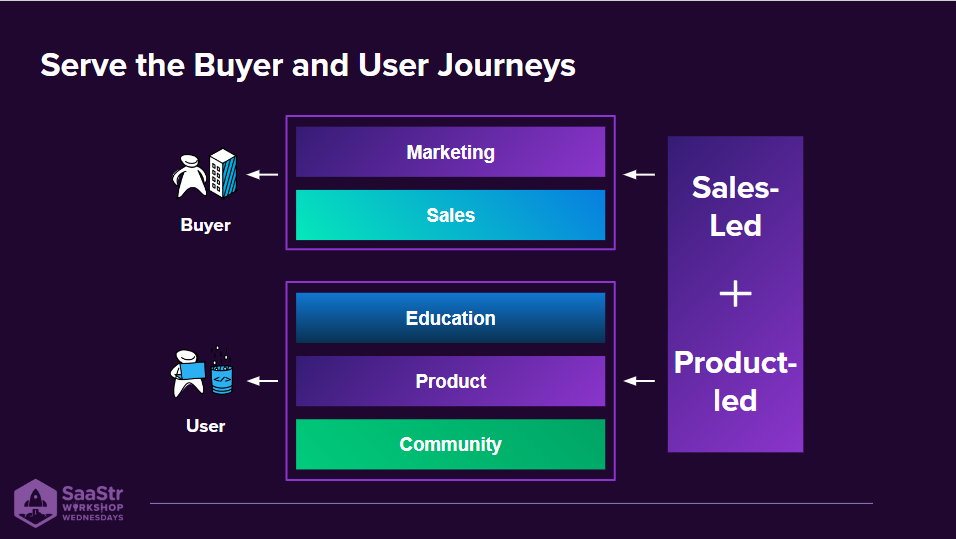What is the right Go-To-Market strategy for a startup getting out of the gate? Sales-led vs. product-led is a hot topic right now, and Jason Eubanks, Chief Revenue Officer of Harness, shares the answer during this week’s Workshop Wednesday — held every Wednesday at 10 a.m. PST. Sign up here to join them FOR FREE!
At Harness, Eubanks leads go-to-market. Everything is defined by customer interactions, from how they find Harness to becoming a customer. What’s his response to startups figuring out which strategy to begin with, product-led or sales-led? “It doesn’t really matter where you start because you’ll need to do both,” Eubanks said.
How do you achieve both? Continue reading to find out.
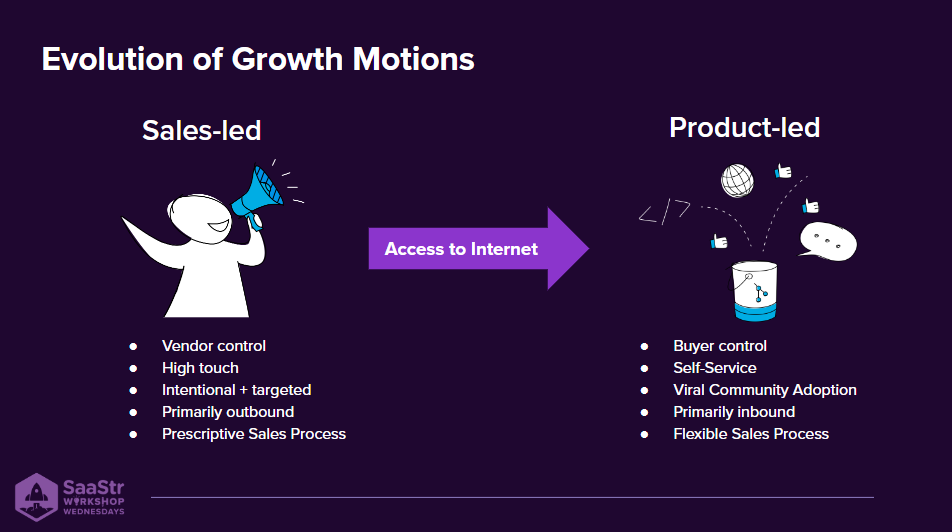
Evolution of Growth Motions
First things first, sales-led is not being replaced by product-led. Before the internet, a vendor could control the product life cycle from awareness to education to trials to purchase. You can be very high-touch when you have a great product and 100% control over how they engage with it. It’s repeatable, prescriptive, and scalable.
So why is the industry talking so much about product-led growth?
With the invention of the internet came access. You can Google everything. As the buyer’s access to information exploded, the vendor’s control over how they receive information lessened.
You can fight it or feed it at this point, and Eubanks recommends feeding it. To stay relevant in today’s landscape, startups need to make it easy for people to find them, have a frictionless self-service, product-oriented experience, and participate in viral community adoption.
By feeding this evolution, your organization will have an efficient inbound funnel, which will require a flexible sales process.
This is where it gets sticky for many Go-To-Market teams.
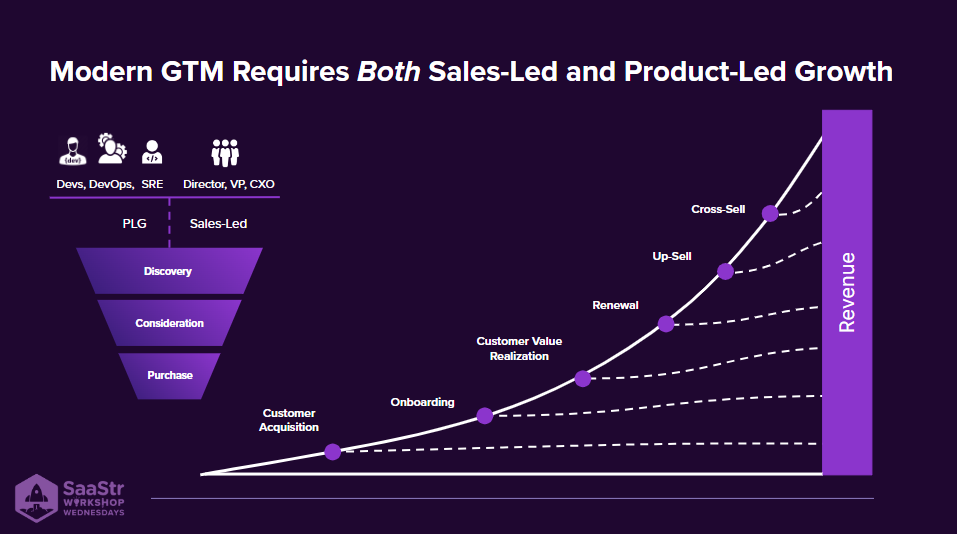
The Two Personas You’re Trying To Reach
If you get this wrong, you could alienate the people you’re trying to build a relationship with. There are two personas you’ll likely reach out to when you combine a PLG strategy with a sales-led growth motion.
The user and the buyer.
The User — Users of the product. For Harness, the user is typically developers, dev ops teams, and SREs. Landing and expanding with a user requires a bottoms-up, product-led approach.
The Buyer — Buyers or consumers of the benefits of the solution. This is usually an executive who cares about capital cost savings, reduction in cloud spend, velocity increases, etc., and requires a top-down, sales-led approach.
These two audiences need the same solution set, but approaching them needs to be in a context that resonates with how they operate as a user vs. buyer.
Modern GTM requires both sales-led and product-led growth. In the end, both come down to discovery. How does each persona discover the solution, and what are you doing to find them?
Two benefits you can expect from focusing on both PLG and SLG are:
- Optimizing customer acquisition costs
- Maximizing the breadth of customers you can reach through small, medium, and large enterprises
From there, it’s about focusing on time to value through onboarding and customer success. Regardless of how they found the customer, this blended strategy will:
- Increase the overall value of every customer over the lifetime of that customer
- Increase revenue
Invest In PLG and SLG Simultaneously
You have to serve both the buyer and user’s journey in this motion, and that means showing up where they are. You can still build out traditional digital marketing campaigns and sales teams, but that’s not where it stops.
When you’re going to stand up a PLG motion, you have to invest in other aspects of sales and marketing, which include:
- Building a dev relationship team or community that lives in Product or Marketing.
- A great product experience where you’ll be dependent on a frictionless sign-up process and frictionless journey.
- Educating users differently than buyers. Buyers want KPIs and keywords typically quantified in pain, metrics, and value. For users, education might be product documentation for a developer, plus call-to-actions for education, speaking to a salesperson, or scheduling a demo.
You have to invest in both of these strategies simultaneously.
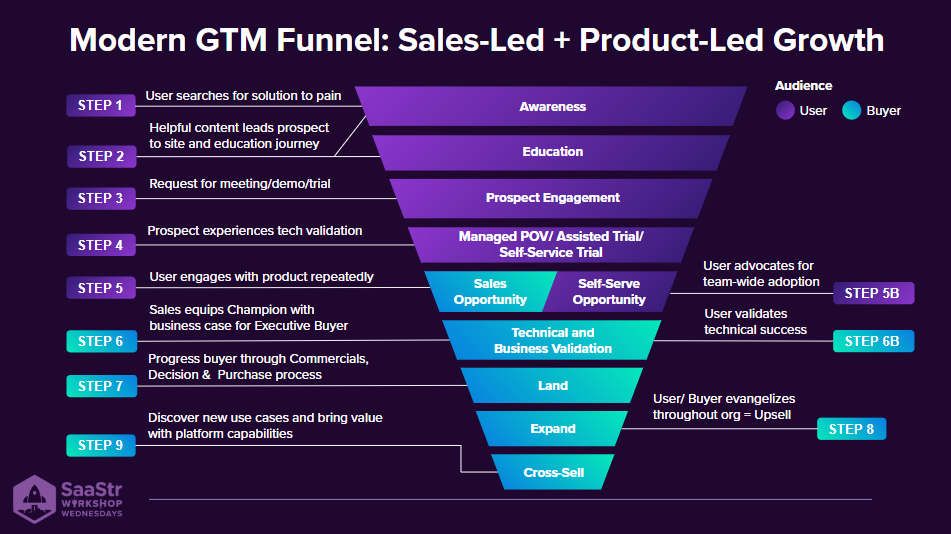
A Modern GTM Funnel Combining Sales and PLG
Now it’s time to put both of those to work. The modern GTM funnel, when combining sales and product-led growth strategies, will look slightly different than your typical sales funnel.
Starting from a user perspective, awareness is the first stop. A user searches for a solution, product, or pain. Once they’ve found you in your community, from a website, or an analyst, you have to present the right kind of content that resonates with them.
If you present a buyer executive version of content to a user, you’ll have a high abandonment rate and low conversion to sign-up.
You can combat this from happening by paying attention to where someone is coming to you from. If they’re showing up from a technical source, you can allow them to learn more and drop them into a developer hub where they’ll find product documentation and product education content.
You aren’t closing with that first interaction, so education is important for a user. They want to lead this process, and if you push them, you’ll lose them.
Meet the user where they are and how they like to learn.
Buyers typically like a meeting, so you’ll approach them with a sales-led approach.
You’ll continue to approach users differently from buyers throughout the rest of the sales funnel. During the tech validation stage, you’ll approach a hand raiser from the website differently than a hand raiser going through a self-service trial.
Develop best practices for these two audiences because going for a quick close with a user will turn them off. Earn the right to the next meeting, and the user will naturally open up.
Teach your sellers to recognize and manage these interactions differently, so they don’t alienate users. The end goal is to create champions for your product, which will help drive upsell opportunities efficiently.
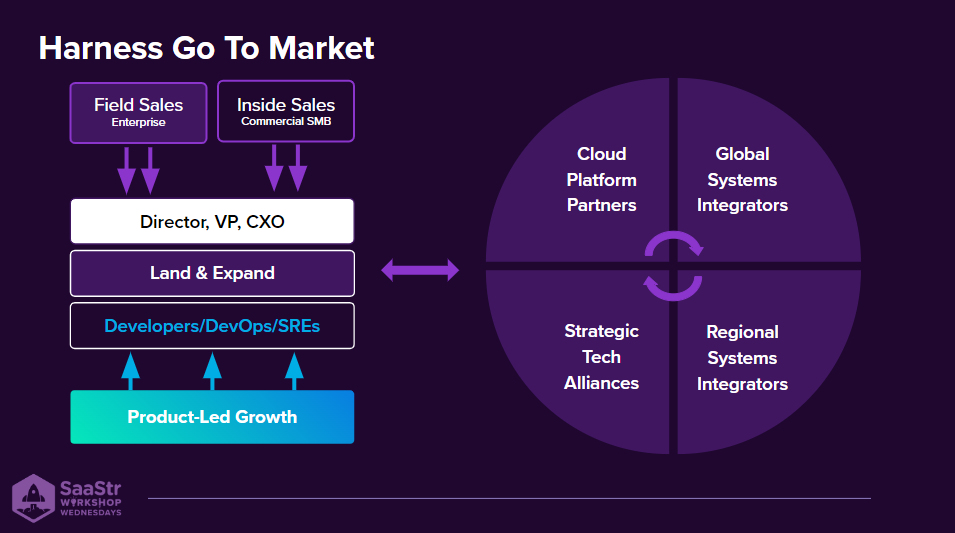
The Takeaway
As you build a sales-led and product-led Go-To-Market strategy, you need to truly understand the alignment between what the buyer and user are trying to solve, how they’re using the tech, and the benefits to help create champions for your product, increase revenue, and minimize churn.
Sales-led vs. Product-led? You need both.

